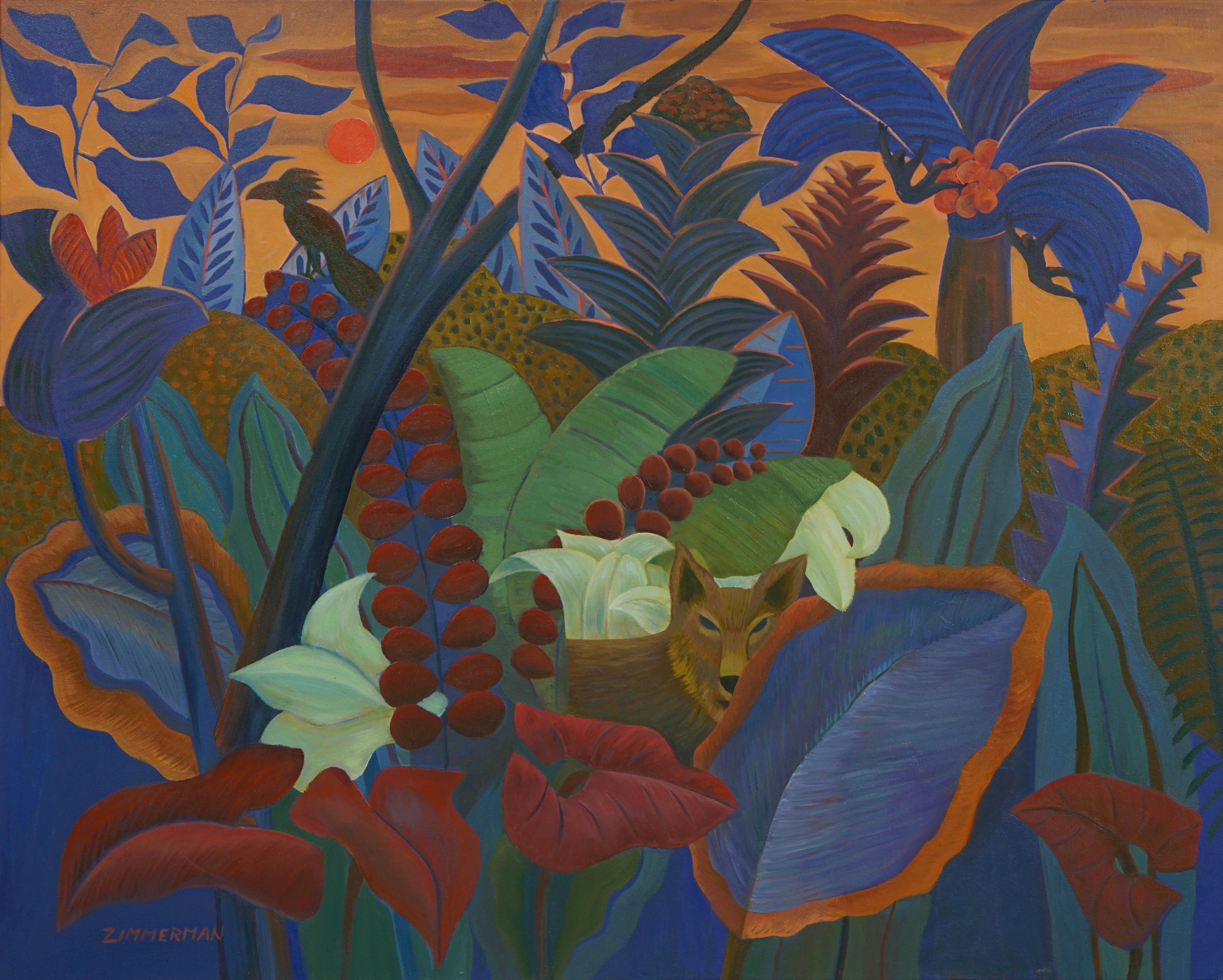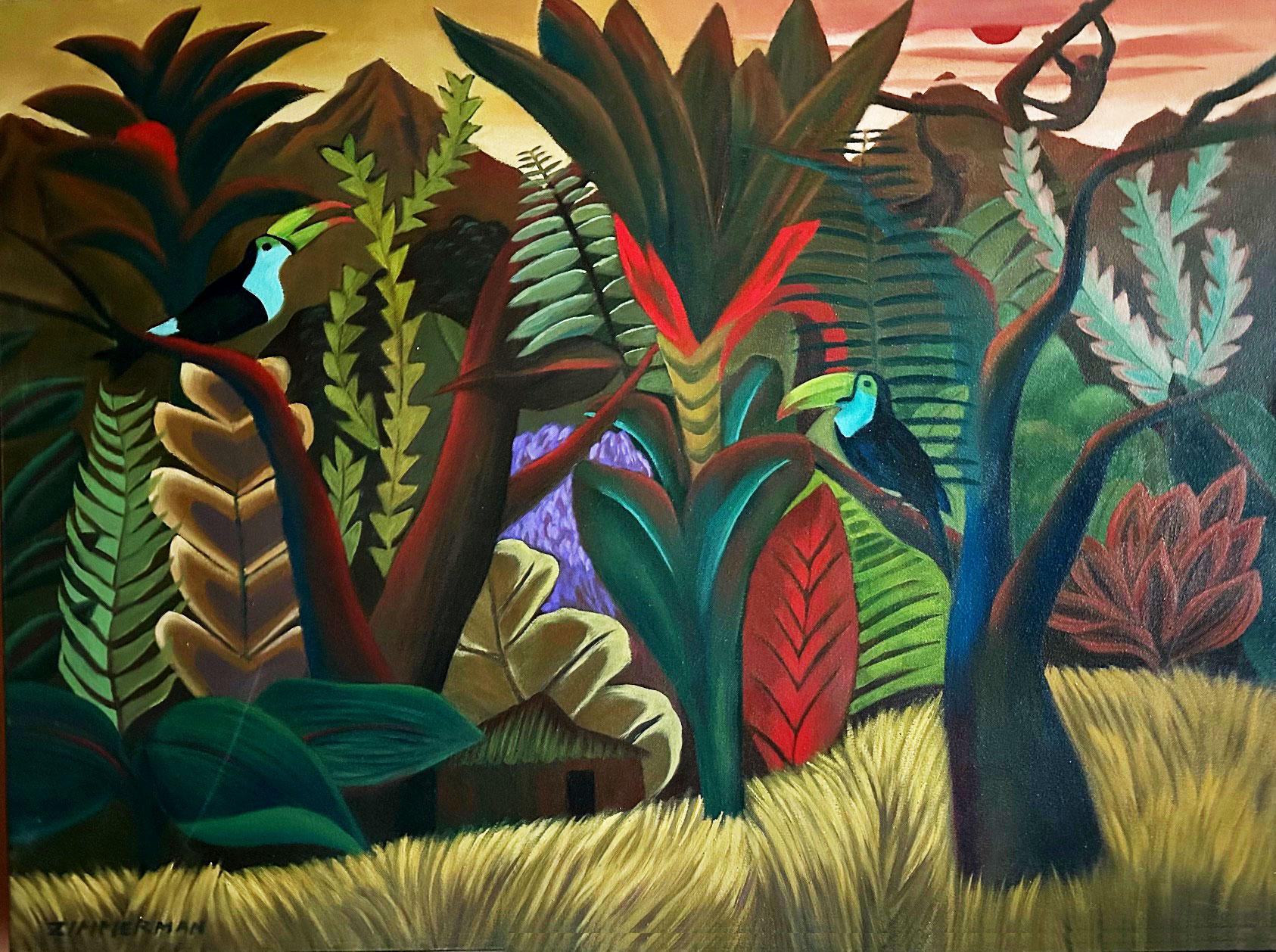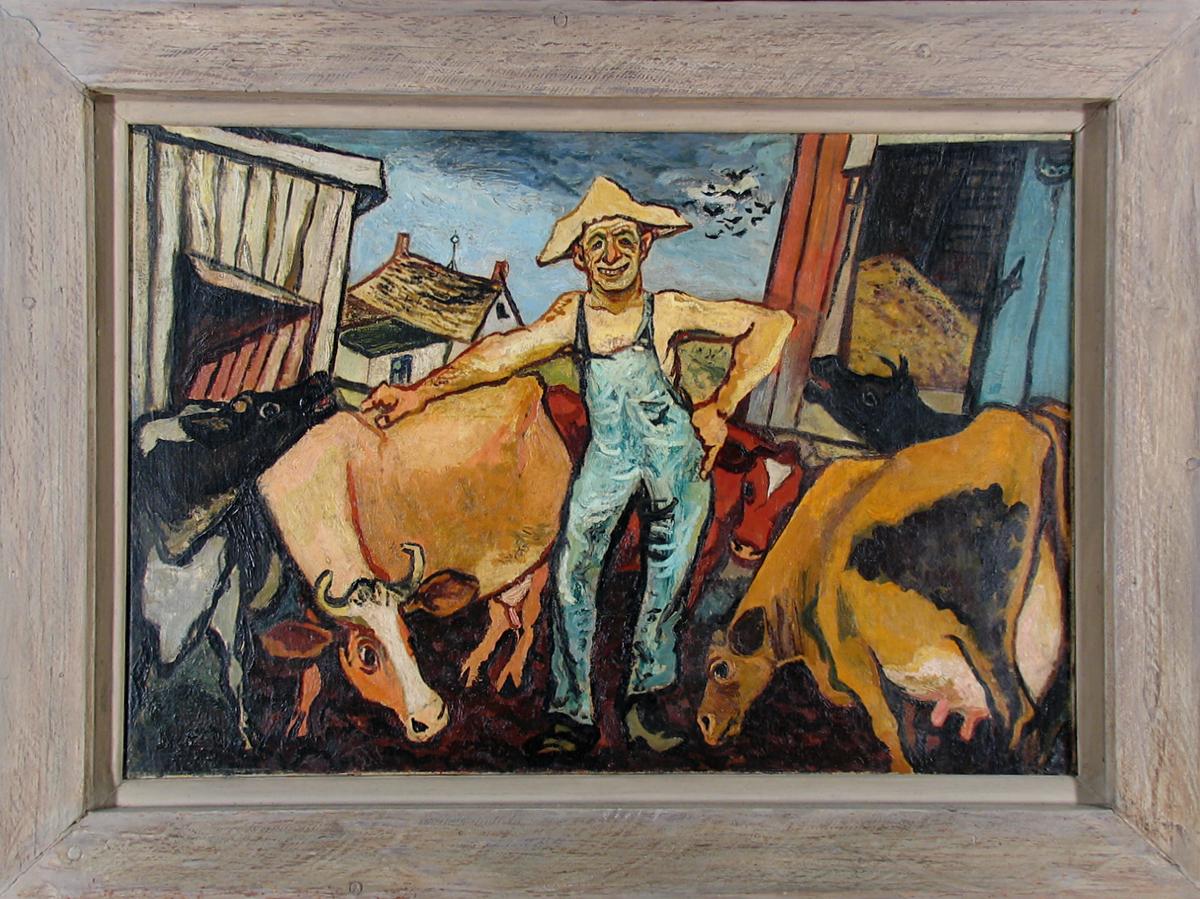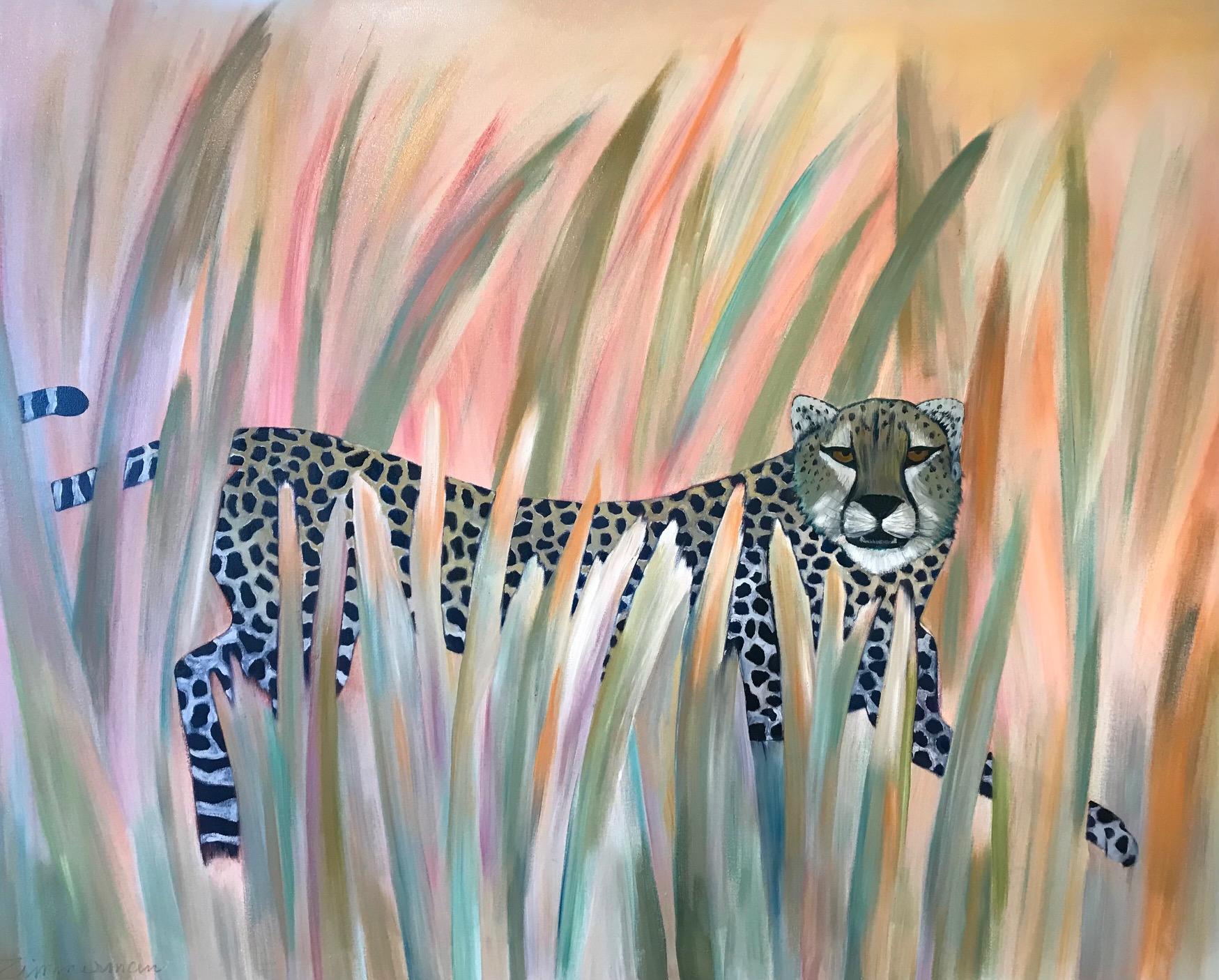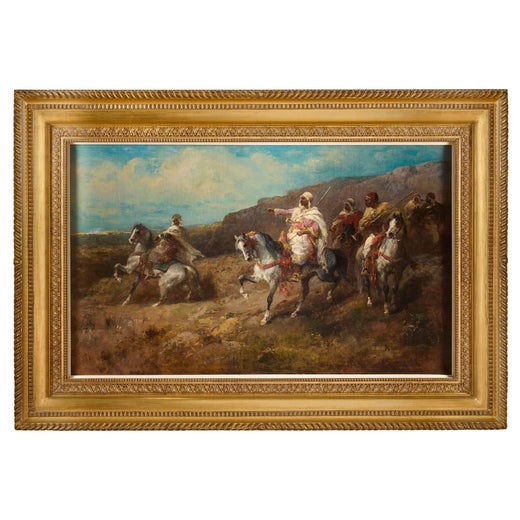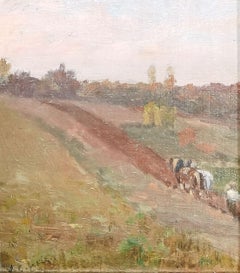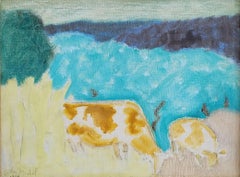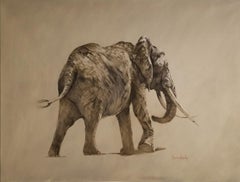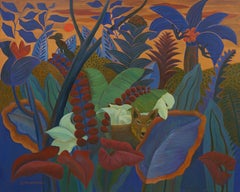Items Similar to "Arab Scouts, " Adolph Schreyer, Middle Eastern Orientalist Scene with Horses
Want more images or videos?
Request additional images or videos from the seller
1 of 6
Adolf Schreyer"Arab Scouts, " Adolph Schreyer, Middle Eastern Orientalist Scene with Horses
About the Item
Adolph Schreyer (1828 - 1899)
Arab Scouts, n.d.
Oil on canvas
33 3/4 x 56 inches
Signed lower right
Housed in an exceptional period American handcarved frame
Provenance:
Sheridan Art Gallery, Chicago
Private Collection, Chicago
Traffic Club of Chicago
Schreyer expert Dr. Christoph Andreas has kindly confirmed the authenticity of this work.
With the increase in travel by steamship and the political involvement of European powers in North Africa and the Middle East in the nineteenth century, paintings depicting the scenery, daily life, and customs of North African and Middle Eastern people became an object of fascination among European and American audiences. The German artist Christian Adolf Schreyer, one of the best known of the so-called Orientalist painters who specialized in these foreign scenes, was particularly renowned for his lively depictions of horses. Schreyer traveled to Egypt and Ottoman Syria in 1859 and to Algeria in 1861; during these trips he learned various Arabic dialects and immersed himself in local culture, including riding with Bedouin nomads.
- Creator:Adolf Schreyer (1828-1899, German)
- Dimensions:Height: 41 in (104.14 cm)Width: 63 in (160.02 cm)
- Medium:
- Period:
- Condition:Relined, skillfully repaired folded area to canvas in upper quadrant. Otherwise excellent overall condition.
- Gallery Location:New York, NY
- Reference Number:1stDibs: LU184129923472
Adolf Schreyer
Adolf Schreyer (1828-1899) was a renowned German artist known for his exceptional skill in painting equestrian and Orientalist subjects. Born on May 9, 1828, in Frankfurt am Main, Germany, Schreyer showed a talent for art from a young age. At the age of 16, Schreyer began his formal artistic training at the Städel Institute in Frankfurt. He later traveled to Düsseldorf, where he studied under the influential landscape and genre painter, Johann Wilhelm Schirmer. Under Schirmer's guidance, Schreyer developed a keen eye for capturing atmospheric effects and natural landscapes. In 1854, Schreyer embarked on a journey that would have a profound impact on his artistic career. He traveled to North Africa, including Algeria and Egypt, where he immersed himself in the vibrant culture and landscapes of the region. The time spent in the Orient greatly influenced his artistic style and subject matter. Schreyer's paintings often depicted scenes of Arab horsemen engaged in battle or moments of intense action. His ability to capture the energy and movement of horses, as well as the exoticism of the Oriental settings, earned him considerable acclaim. His works were highly sought after by collectors and art enthusiasts of his time. The artist's Orientalist works were characterized by their meticulous attention to detail, vibrant colors, and dramatic lighting. Schreyer's ability to convey the intensity of battle scenes, the grace of horses in motion, and the rich cultural traditions of the Arab world set him apart as a master of his craft. Throughout his career, Schreyer received numerous accolades and recognition for his art. He exhibited his works extensively in Germany and other European cities, including Paris and Vienna. Schreyer's paintings were also well-received in America, where they found a significant market. Today, Adolf Schreyer's works can be found in prestigious museums and private collections around the world. His legacy as one of the foremost Orientalist painters of the 19th century continues to captivate art enthusiasts and collectors alike. Adolf Schreyer passed away on July 29, 1899, leaving behind a rich artistic legacy that remains influential to this day.
About the Seller
5.0
Platinum Seller
Premium sellers with a 4.7+ rating and 24-hour response times
Established in 2022
1stDibs seller since 2022
104 sales on 1stDibs
Typical response time: <1 hour
- ShippingRetrieving quote...Shipping from: New York, NY
- Return Policy
Authenticity Guarantee
In the unlikely event there’s an issue with an item’s authenticity, contact us within 1 year for a full refund. DetailsMoney-Back Guarantee
If your item is not as described, is damaged in transit, or does not arrive, contact us within 7 days for a full refund. Details24-Hour Cancellation
You have a 24-hour grace period in which to reconsider your purchase, with no questions asked.Vetted Professional Sellers
Our world-class sellers must adhere to strict standards for service and quality, maintaining the integrity of our listings.Price-Match Guarantee
If you find that a seller listed the same item for a lower price elsewhere, we’ll match it.Trusted Global Delivery
Our best-in-class carrier network provides specialized shipping options worldwide, including custom delivery.More From This Seller
View All"Ploughing on the Hillside" Jean-Charles Cazin, Plein Air Landscape Sketch
By Jean-Charles Cazin
Located in New York, NY
Jean-Charles Cazin
Ploughing on the Hillside
Signed lower left
Oil on board
6 1/2 x 6 inches
The son of a well-known doctor, FJ Cazin, he was born at Samer, Pas-de-Calais. After st...
Category
Mid-19th Century Tonalist Animal Paintings
Materials
Oil, Canvas
$1,600 Sale Price
20% Off
"Bucolic Landscape" Sally Michel Avery, Female American Modernist Bright Pastel
By Sally Michel-Avery
Located in New York, NY
Sally Michel Avery (1902 - 2003)
Bucolic Landscape with Cows, 1963
Oil on canvasboard
9 x 12 inches
Signed and dated lower left
Provenance:
The art...
Category
1980s American Modern Landscape Paintings
Materials
Canvas, Oil, Board
"African Elephant Walking, " Spencer Hodge, Safari Wildlife Animals, Realism
Located in New York, NY
Spencer Hodge (British, b. 1943)
African Elephant Walking
Oil on canvas
38 x 50 1/2 inches
Signed lower right
Spencer Hodge attended the Hastings School...
Category
Late 20th Century Realist Animal Paintings
Materials
Canvas, Oil
$12,000 Sale Price
20% Off
"Insiders Say Too Much is Enough" Lawrence Philp, Abstracted Surrealist Forms
Located in New York, NY
Lawrence Philp
Insiders Say Too Much is Enough
Signed lower left; titled on overlap
Oil on canvas
70 x 59 1/2 inches
Lawrence Philp, the son of Jamaican immigrants, studied at the ...
Category
1970s Surrealist Abstract Paintings
Materials
Canvas, Oil
"Interior of a Stable" William Hart, Hudson River School Antique, Boy and Horse
By William Hart
Located in New York, NY
William M. Hart (1823 - 1894)
Interior of a Stable
Oil on canvas
17 x 12 inches
Provenance
William Macbeth Gallery, New York
Mrs. Mabel Brady Garvan Collection
Christie's New York, Sporting Art, November 28, 1995, Lot 116
Ann Carter Stonesifer, Maryland
Estate of above
Brunk Auctions, Asheville, North Carolina, January 27 2018, Lot 777
Exhibited
New York, The Metropolitan Museum of Art, Life in America, April 24 - October 29, 1939, no. 123, illustrated.
New York, Macbeth Gallery, 1892: Sixtieth Anniversary Exhibition, April 1952, p. 5, no. 18.
Literature
Turner Reuter Jr, Animal and Sporting Artists in America, Middleburg, Virginia, 2008, p. 306.
Gary Stiles, William Hart: Catalogue Raisonné and Artistic Biography, no. 1126, illustrated.
It should be noted that the Francis Patrick Garvan and Mrs. Mabel Brady Garvan collection, of which this painting was a part of, was one of the foremost American Art collections and now makes up a large part of the Smithsonian American Art Museum and the Yale University Art Gallery collections.
Born in 1823 in Paisley, Scotland, William Hart emigrated with his parents to the United States at the age of nine and settled in Albany, New York. It was here that Hart first began his artistic training when he was placed under the tutelage of Messrs, Eaton & Gilbert, the prestigious coach-makers from Troy, New York. During this time, Hart learned how to decorate coach panels, covering them with either landscapes or figurative compositions. At the age of seventeen, he was eagerly contemplating an artist’s profession. Consequently, he left the mechanical trade of coach-making and began expanding his artistic pursuits to more refined endeavors.
Hart followed coach-making with decorating window shades and later developed an interest in portraiture. Around 1840, he established his first formal studio in his father’s woodshed in Troy. There, he created many likenesses of individuals, affording him a nominal income. Once, he remarked that he felt prouder over his first fee of five dollars for painting a head then for the larger sums he would command later in his career. Nevertheless, his wages from portraits during this early period proved insufficient. Thus, he expanded into landscape painting, allowing him to barter his works or sell them for modest prices.
In 1842, Hart moved to Michigan in an attempt to further his success; portraiture remained his primary means of support. Unfortunately, his experiences in the West were disappointing. Hart spent three years living a rough existence until he finally returned to Albany in 1845. Upon his return, he fully devoted himself to the art of landscape painting. Despite his failing health, he worked diligently to perfect his skill until 1849 when he traveled abroad to his native land of Scotland. This trip was made possible through the generosity of his patron and advisor, Dr. Ormsby of Albany. For three years, he studied in the open-air, creating brilliant sketches of the Scottish Highlands and the surrounding British Isles.
Returning to Albany once more in 1852, Hart enjoyed improved health and was reinvigorated with purpose. The following year, he moved to New York and opened a studio, promoting himself as a specialist in landscape painting. Hart became a regular contributor to the National Academy of Design. His works received a great deal of attention from artists and connoisseurs alike, all of whom praised him for his fresh, self-taught style. In 1855, he was designated as an associate of the National Academy of Design; three years later he was elected to Academician. In 1865, he was unanimously chosen to be the first president of the Brooklyn Academy of Design. It was during his tenure there that he delivered his famous lecture The Field and Easel, which emphasized the distinguishing principles of landscape art in America. Hart argued that landscape painters should express the “look of the place” being depicted.Critics during the 1870s noted his sensitive balance between capturing a strict “real” interpretation of nature and that of a more “ideal” sentimental tone. For instance, in 1869, Putnam Magazine noted that Hart brought back “exquisite studies” of the surrounding Tappan...
Category
19th Century Hudson River School Animal Paintings
Materials
Canvas, Oil
$60,000 Sale Price
20% Off
"Feathered Tribe" Mary Russell Smith, 1871 Graceful Academic Chicks Painting
By Mary Russell Smith
Located in New York, NY
Mary Russell Smith
Feathered Tribe, 1871
Signed and dated lower left
Oil on canvas
9 1/2 x 14 3/4 inches
The daughter of theater scenery and landscape painter Russell Smith (1812–1...
Category
1870s Academic Animal Paintings
Materials
Canvas, Oil
You May Also Like
"Linda Holt: Recent Koi & Abstractions"
By Linda Holt
Located in Wellesley, MA
NOTE: The painting on the left of this diptych has been sold however it can
be replaced with the 30" x 40" ("Two Koi June") pictured individually as an
added image. It's the one w...
Category
2010s Expressionist Landscape Paintings
Materials
Cotton Canvas, Oil
Woven Jungle - Landscape Painting By Marc Zimmerman
Located in Carmel, CA
In a dense tropical jungle a strange animal timidly peaks out from the foliage. Deep blues rich greens and burgundys set the color tones of this fantasy jungle.
Woven Jungle - Lands...
Category
2010s Contemporary Landscape Paintings
Materials
Canvas, Oil
Toucans In The Jungle By Marc Zimmerman
By Marc Zimmerman
Located in Carmel, CA
A variety of colorful and surreal plants weave amongst each other. They harmoniously rise in this fantasy jungle as toucans accent the tropical scene.
Toucans in the Jungle - Landsc...
Category
2010s Contemporary Landscape Paintings
Materials
Canvas, Oil
Peace Blessings Portland - Landscape Painting - Oil On Canvas By Marc Zimmerman
By Marc Zimmerman
Located in Carmel, CA
Ascending and soaring blue birds give rhythm and grace to the city. This is an artists memory of the city of Portland emphasizing the river and bridges.
'Peace Blessings Portland' -...
Category
Late 20th Century Contemporary Landscape Paintings
Materials
Canvas, Oil
The Happy Farmer oil painting by Gregorio Prestopino
By Gregorio Prestopino
Located in Hudson, NY
Provenance: The Artist. Menikoff collection (friends of the artist)
About this artist: Born in Little Italy in 1907, Gregorio Prestopino first set out to become a sign painter as the son of New York City immigrants. Instead, his talent provided a life-changing scholarship to the National Academy of Design, and for five years he studied drawing under C. W. Hawthorne. He spent the summer of 1934 at the MacDowell Colony in Peterborough, New Hampshire. His deep involvement with the colony led him to later serve as its director in 1954.
Much of Prestopino’s work was in the vein of social realism. During the 1940s and 1950s he became deeply invested in portraying everyday Manhattan and Harlem scenes. He first became interested in the Ashcan school at the National Academy of Design, and remained committed to an interest in working with urban scenes. His lively treatment of people and events revealed his affinity for sixteenth-century artist Pieter Breughel. Later in his career, he focused on producing images of nudes and picturesque New Hampshire landscapes, and investigated the relationship between color and form.
Prestopino exhibited at several biennials at the Corcoran Gallery, at the Art Institute of Chicago, the Museum of Modern Art. His work was frequently shown at the Pennsylvania Academy of Fine Arts, where he was awarded the Temple Gold Medal in 1946 and an additional prize in 1952. He was awarded a National Institute of Arts and Letter Grant in 1961, and in 1972 the National Academy of Design awarded him the Altman Figure Painting Award.
Prestopino’s artistic cache skyrocketed when Life magazine published his images from New York’s maximum security institution Green Haven as part of its “Prison Series” in 1957. That same year his paintings and sketches of urban life were featured in the short film Harlem Wednesday. Directed by John and Faith Hubley...
Category
1930s Modern Landscape Paintings
Materials
Canvas, Oil
The Cheetah - Animal Wild Cat Painting - Contemporary Nature Art By Marc
By Marc Zimmerman
Located in Carmel, CA
The Cheetah in the nature
This masterpiece is exhibited in the Zimmerman Gallery, Carmel CA.
Marc Zimmerman creates playful paintings, whether deep mysterious jungle or delightful...
Category
2010s Contemporary Animal Paintings
Materials
Canvas, Oil
Recently Viewed
View AllMore Ways To Browse
Ottoman Antique Art
Antique Riding Horse
Antique German Horse
African American 19th Century
Eastern Arabic
Bedouin Art
Steamship Paintings
Arab Horse
Bedouin Painting
Antique Bedouin
Letterpress Vintage
Lyons Antique Prints
Miro Lithograph Black And White
Nice France Posters
Primitive Free Form
S Ida
Sacred Heart Vintage
Sea Bird Sculpture
